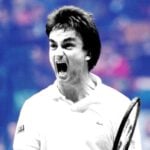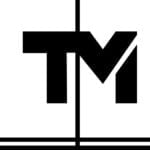June 4, 1972: Gimeno becomes oldest man to win Roland-Garros…at that time
On this day in tennis history, a Spanish clay-courter made Roland-Garros history – more than a decade before Rafael Nadal even stepped foot on a court

What happened exactly on that day and why it is memorable in tennis history
On this day, June 4, 1972, 34-year-old Spaniard Andres Gimeno became the oldest player to ever triumph in the men’s singles at Roland-Garros, defeating Frenchman Patrick Proisy in the final (4-6, 6-3, 6-1, 6-1). While Proisy is one of only three Frenchmen to reach the Roland-Garros final in the Open era (along with Yannick Noah, who won the tournament in 1983, and Henri Leconte, who lost to Mats Wilander in 1988), Gimeno’s record was broken in 2022 when Rafael Nadal broke it at the age of 36 years and two days.
June 4, 1972: Andres Gimeno of Spain, age 35 years and 10 months, becomes the oldest man to win the French Open singles title, defeating 22-year-old Patrick Proisy of France 4-6, 6-3, 6-1, 6-1. #RolandGarros pic.twitter.com/TfNyo9UxIL
— SpanishTennisSecrets (@SpainTennisBook) June 4, 2018
The players involved: Andres Gimeno and Patrick Proisy
- Spain’s Andres Gimeno
Andres Gimeno, born in 1937, was one of the first Spanish players to compete at an international level, along with Manolo Santana. Having won the junior event at Roland-Garros in 1955, he reached the quarter-finals of the men’s event in 1960 (lost to Nicola Pietrangeli, 6-3, 6-1, 3-6, 6-2). The same year, he signed a contract with Jack Kramer to becoming a touring pro, and hence, he couldn’t attend any Grand Slam events in the eight following years. Throughout the 60s, he was considered as the third best player in the world, behind the Australian legends Rod Laver and Ken Rosewall, whom he defeated numerous times. When the Open era began, in 1968, Gimeno, who was already 30 years old, reached the semi-finals at Roland-Garros (defeated by Rosewall, 3-6, 6-3, 7-5, 3-6, 6-3). Although he was still competing in Lamar Hunt’s National Tennis League, he finished runner-up at the 1969 Australian Open (lost to Laver, 6-3, 6-4, 7-5) and the semi-finals at Wimbledon in 1970 (lost to John Newcombe, 6-3, 8-6, 6-0). He didn’t perform very well in any major tournament in 1971, and although some thought that, aged 33, he was a declining player, he was still considered by many as one of the best players in the world, particularly on clay.
- France’s Patrick Proisy
In 1972, 22-year-old Patrick Proisy was at his peak form. The Frenchman had won the boys’ event at Roland-Garros in 1967 and had turned pro the following year. In 1971, he took his career to a next level, reaching the French Open quarter-finals (lost to defending champion, Jan Kodes, 6-4, 8-6, 1-6, 6-1). He confirmed his new status in 1972, which he would himself call his best year as a tennis player. In Madrid, he defeated the rising star Jimmy Connors (1-6, 6-1, 6-1) and the clay-court terror Manuel Orantes (7-6, 4-6, 6-4), and, two weeks before the French Open began, after being heavily defeated by Orantes (6-0, 6-3, 6-3) on the first day of a Davis Cup tie against Spain played at Roland-Garros he scored a promising win against Andres Gimeno (6-2, 6-2, 9-11, 6-3). Along with Pierre Barthes, he was the Frenchman to keep an eye on at Roland-Garros.
The place: Roland-Garros, Paris
The story took place at Roland-Garros, Paris. The stadium, located in the west of Paris at the edge of the Bois de Boulogne forest, had been hosting the French Grand Slam since 1928. It was the first Grand Slam to be played on clay, the slowest surface, which made it the hardest tournament to win from a physical perspective. In the first years of the Open era, the four Grand Slam tournaments were extremely prestigious, but the prize money was nothing like what we know in 2021, and some of the best players sometimes preferred to attend more lucrative events, such as Lamar Hunt’s National Tennis League.
The facts
At the 1972 French Open, for the first time in the Open era, and for the first time since Pierre Darmon in 1963, a Frenchman had made his way into the final. Patrick Proisy, 22 years old, had shown in the previous weeks that he was in great shape, scoring several prestigious wins during the clay-court season. However, not many observers expected him to achieve such a feat as defeating the double-defending champion and first seed Jan Kodes in the quarter-finals (6-3, 6-8, 2-6, 6-2, 6-1), as well as Manuel Orantes, who was considered as the best clay-court player at the time, in the semi-finals (6-3, 7-5, 6-2).
In the final, another Spaniard waited for Proisy: Andres Gimeno, 34 years old, a very experienced clay-court player. The two men knew each other quite well, as they had just faced each other in a Davis Cup tie, less than a month before, in the exact same place, and Proisy had prevailed (6-2, 6-2, 9-11, 6-3). However, as the Frenchman soon discovered, playing against Gimeno in the final of a Grand Slam tournament was a different story.
“At the time, the semi-finals were played the day just before the final, so there was not much time to recover,” recalls Patrick Proisy. “When I played Gimeno in the Davis Cup, I was fresh, whereas at Roland-Garros, I had lost a lot of energy on the way, having played five sets against Kodes in the quarter-finals.”
The Frenchman took the first set, 6-4, but he soon paid the toll for the efforts he had already made.
“The first set was very tough, I remember that although the score doesn’t look that close, I had a lot of trouble finishing it off. I was tired physically and mentally. After I lost the second set (6-3), the match was interrupted by rain for an hour and half. When we came back, I had no legs, while Gimeno played flawless tennis, he really delivered an outstanding performance.”
The Spaniard stormed through the two last sets, 6-1, 6-1. At 34 years and 10 months, he was the oldest player to ever triumph at Roland-Garros.
“34 years is not that old,” Proisy says. “Besides, Rosewall had won the Australian Open the same year, at 37, and have a look at what Federer does at nearly 40. Gimeno was an exceptional player, who had played the major part of his career as a pro, without being able to attend the Grand Slams. He deserved to win a major, although I would have preferred him not to do it against me.”
What next
His triumph at Roland-Garros in 1972 would remain Gimeno’s last feat. He would retire from tennis in 1973, before opening a tennis club in Spain, breeding a new generation of clay-court threats. Introduced at the Tennis Hall of Fame in 2009, Andres Gimeno would pass away in 2019.
Patrick Proisy would confirm his great shape in the following months, reaching the semi-finals at the 1973 Australian Open (lost to John Newcombe, 7-6, 6-4, 6-2). In December 1972, after the ATP was established, he would become the first Frenchman to ever claim an ATP title (in Perth, defeating Wanaro N’Godrella in the final, 7-5, 6-4, 6-3).
At the start of the 2022 French Open, Andres Gimeno was the oldest Roland-Garros champion of all-time. However, Rafael Nadal claimed a 14th title in Paris, meaning another Spaniard would break that record, fifty years after it was established. Since then, Novak Djokovic has beaten that record in 2023.












